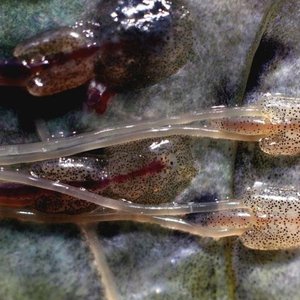Recent improvements in hatchery production technology for high-value marine finfish species such as groupers have led to an increased interest in setting up hatcheries to produce fingerlings for aquaculture. Small-scale hatcheries make this technology available to poor people in developing countries. Capital costs for small-scale hatcheries are relatively low, and the profi tability of these ventures ensures rapid payback of capital investment.
This guide provides an outline of the requirements to establish a small-scale marine finfish hatchery, particularly the economic aspects. It is intended to provide suffi cient information for potential investors to decide whether investment in such ventures is appropriate for them. The guide provides some basic technical information in order to give an indication of the level of technical expertise necessary to operate a small-scale marine fi nfi sh hatchery. However, it is not intended as a detailed technical guide to the operation of small-scale hatcheries. Additional resources, such as training courses in marine finfi sh hatchery production, are available and these are listed in this document.
Development of small-scale hatcheries may be more appropriate where there are existing marine hatchery operations, e.g. for shrimp or milkfish. By definition, small-scale hatcheries do not have broodstock facilities, so a supply of fertilised eggs (usually from a larger hatchery) is essential. Access to fertilised eggs and experienced hatchery staff will limit the application of small-scale hatchery technology.
Despite this, there is considerable potential for this technology to be widely adopted.
This guide has been written by a team of experts in marine finfi sh aquaculture who have been involved in a multinational collaborative research project since 1999.
Table of Contents
1. Introduction
What is a small-scale marine finfish hatchery?
Advantages of small-scale marine finfish hatcheries
Licensing and permits
2. Small-scale hatchery equipment, design and setup
Site selection
Hatchery layout
Tank design and description
Hatchery equipment and accessories
3. Live and compounded feeds
Live food species
Compounded feeds
Technical manual for live feed
4. Key points for hatchery operation
Survival rates and production
Hatchery staffing and manpower skills
5. Training, extension and information dissemination
Training activities in the region
Information dissemination
6. Health management, disease diagnosis and treatment
7. Economic assessment
Capital investment
Operating expenses
Non-operational expenses
Profit and loss
Glossary
References
Authors:
Sih-Yang Sim, Michael J. Phillips
Network of Aquaculture Centres in Asia-Pacifi c, Bangkok, Thailand
Michael A. Rimmer
Department of Primary Industries and Fisheries, Northern Fisheries Centre, Cairns, Queensland, Australia
Joebert D. Toledo
Southeast Asian Fisheries Development Center, Aquaculture Department, Iloilo, Philippines
Ketut Sugama
Department of Marine Affairs and Fisheries, Central Research Institute for Aquaculture, Jakarta, Indonesia
Inneke Rumengan
Sam Ratulangi University, Manado, Sulawesi, Indonesia
Kevin C. Williams
Commonwealth Scientifi c and Industrial Research Organisation, Marine Research, Cleveland, Queensland, Australia
Publication:
NACA, Bangkok, Thailand. 17pp. ISBN 974-93053-2-9
Read on the ENACA website (PDF) or download here:







